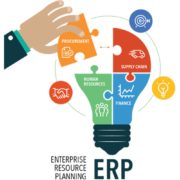How to successfully implement and manage a BPM strategy?
Have you ever thought that business process management (BPM) is too complex and time consuming to bring success in your small or midmarket business? If the answer is “yes”, you’d better think once again. BPM indeed sounds quite complex because it incorporates business process analysis, automation, optimization, modeling, workflow and other process-related techniques. But even with less resources a midmarket enterprise can develop a strategy that helps the business streamline processes to a great extent. Thus, it can become as efficient as its larger competitors are.
In fact, as Dennis Drogseth, vice president of Enterprise Management Associates Inc. says, “The smaller the organization, the more favorable the environment for achieving big changes”.
So, how can you make your processes more effective, easy to follow and consistent? Here are some steps and tips to getting a BPM strategy off the ground:
- First of all, you should define and get a handle on your existing processes. This will help you establish a basis for process improvement. This process mining, gathering and organizing of information is easily done by specific business analytics tools. Understanding your current state and the metrics important to your business is a prerequisite for achieving improvement.
- Focus on outcomes and end results, rather than tasks. In this you need to find and rely on experienced process analysts. Otherwise, using wrong skills or people will eventually prove to be an expensive mistake.
- Combine processes when they are in progress. Knowledge about workflow management comes in handy here. Consider connecting parallel processes when they are in progress, not when they are already completed. Some tasks which are being duplicated, can be automated by combining.
- Speaking of duplication, unnecessary duplicated data should be eliminated, because it can give errors. This means that information should be captured at its source.
- Pull all your resources together, no matter of the location. Cloud computing and enterprise social networking allow companies to streamline business process management. Centralizing processes will save you time and money, while on the other hand, it will mitigate potential risks.
- Focus on improving existing processes, rather than on creating new, “perfect” ones. Having said that, common and reusable processes are the one to aspire towards. They can be used across each business area and thus result in lower cost implementation.
- Rely on continuous change, or continuous improvement approach. This means that changes and improvements can be made, extended and propagated over time. If something is not there on day one, it can be progressively and eventually added.
- Know when to ask for help. Seeking external help by hiring an outside consultant will definitely provide you with precious insights which you might have possibly ignored.
On the whole, we must say that re-engineering your business processes will inevitably lead to efficiency improvements and more productive employees. A major factor for the latter is giving your workers more responsibility in the sense of decision-making ability.











Leave a Reply
Want to join the discussion?Feel free to contribute!